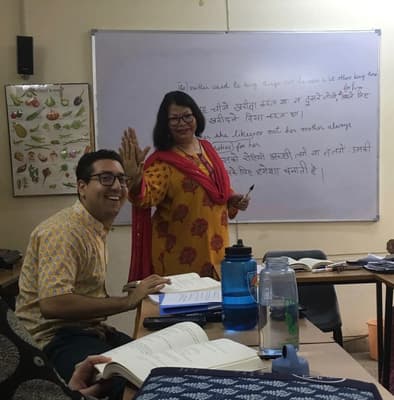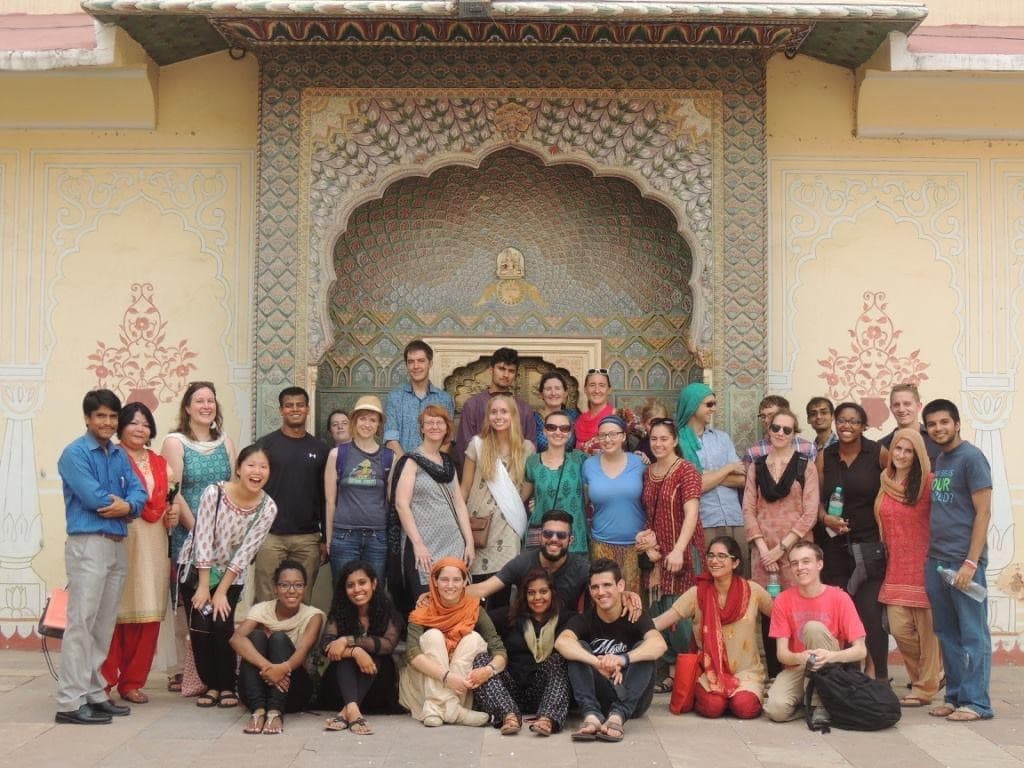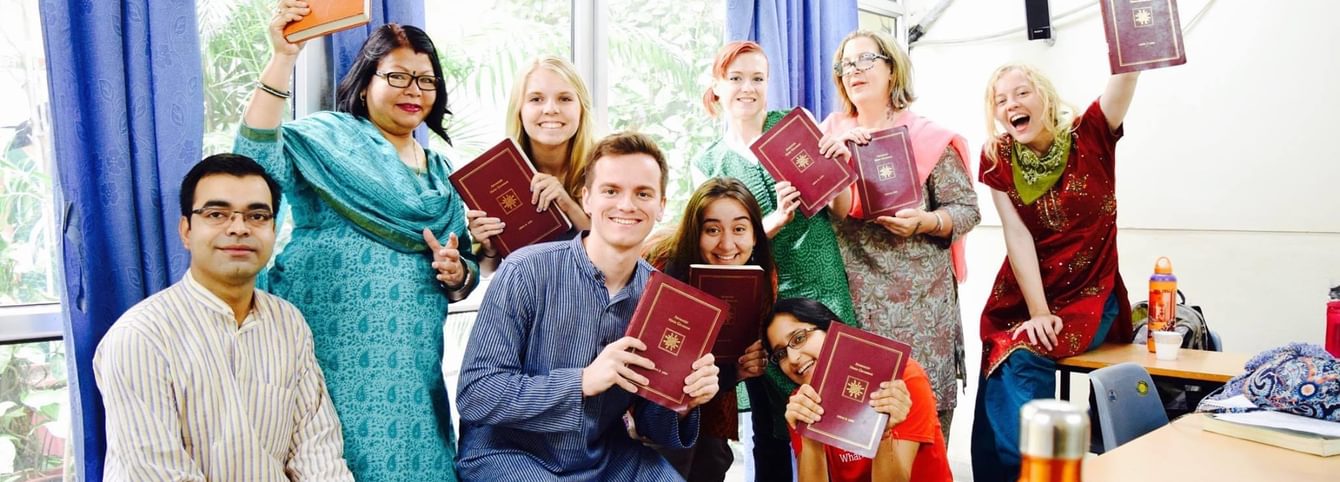Neelam Singh is an instructor for the 2021 CLS Virtual Hindi program hosted by the American Institute of Indian Studies (AIIS). Having worked for AIIS in India for most of her career, Neelam Ji has interacted with well over 1,000 U.S. students who come to Jaipur, India each summer to learn Hindi. Neelam Ji recently spoke with the CLS team to share her thoughts on teaching Hindi.
What has been your favorite part of teaching?
My favorite thing about teaching the students is that I not only teach students, but that I learn from students too. It seems to me that I might have learned more from them than I have taught. Part of this relates to how to teach. In the Indian teaching system, teachers often enter the classroom, lecture, and leave without too many interactive sessions. This is slowly changing but working with US students I have learned to expect students to ask the questions that come to their mind. I had to get used to being able to admit that I didn’t always immediately know the answers to why something is a certain way, but these questions inspired me to keep learning more and grow as a teacher. Having to reflect on student questions I would never have considered feels really good to me – I am teaching, but at the same time I am also being challenged to keep learning as well. This is really important.

How do you find teaching virtually?
I like the virtual program a lot, though of course there are both good and bad parts. In the in-person program, we get to have a lot of interaction with the students. When we teach, we have room to walk around and we can see what each student is doing. Now, we teachers can only see four people at a time on the screen which is a bit bothersome. Still, to me, virtual teaching isn’t a particularly strange or different experience. Looking at the students’ progress, the in-person and virtual program are quite comparable. In the past, my beginning-level students usually pass to the intermediate level by the end of the program. Last year in the 8-week virtual program most beginning-level students also passed to the intermediate level. In that sense, the language growth seems about equal and I am confident that most students in this virtual year’s virtual program will reach the intermediate level by the end of the summer as well.
The individual connections are a special part of the program. Some people come from such different academic background, such different places and meet here and become friends. Some people have gotten so close that after coming here, they marry other students from the program, then have kids. Seeing those connections always feels really good for me.
Do you have any special memories or stories from this summer?
This summer, there is one new thing. When we are in class, when someone says something wrong, I write it on the board and ask another student, ‘is this correct?’ They say, ‘yes this is correct,’ but in their mind they think that I am trying to play a trick on them. So ‘Neelam Ji’s trickery’ is a fun new phrase this year. Even when a student gives a correct answer and I ask the other students if it is correct, they always ask, ‘are you tricking on us?’ They live in that mindset that whenever I ask a question, it must be a trick question.
Another story is that one day, I had a power outage and I didn’t think I would be able to teach classes that day because my computer only holds two hours of charge and I had three hours of class to teach. My first class was individual consultation with Anna and I told her to tell her classmates that for the next class, I might not be able to come because there is no power at my house and her group should join the other beginning class. She protested not having class together and made such an effort to explain to me how to use Zoom on my phone. It was very hard to teach without screensharing materials, but I still felt really nice that she is just an excited young student trying to explain to me how to do this. That felt good for me that the students didn’t just think, ‘ok, how will we do class now.’ When the students cooperate and help the teachers, that gives me a lot of energy. In the end, my power came back and I was able to teach all the classes, but still. You know, we are sitting miles apart and sometimes you feel a sense of aloneness or that students are not thinking of you, but it is not like that.
The individual connections are a special part of the program. Some people come from such different academic background, such different places and meet here and become friends. Some people have gotten so close that after coming here, they marry other students from the program, then have kids. Seeing those connections always feels really good for me. I had two students in the past who met in the program– they met here and then they got married and they now have a really cute daughter. Whenever I go on Instagram, I always see her picture at the top, and it always makes me feel nice.

Having worked with so many students, can you share what some of the more common reasons that students have for wanting to study Hindi?
I can give many reasons for why they want to study Hindi, like as a linguistic variety Hindi is the fourth most spoken language in the world or Hindi is the lingua franca of the Hindi belt and to lesser extent other parts of India, etc. But besides these great sounding reasons, I think Bollywood has a crucial role to play. Many of the students during my long career of teaching have reported that their interest in Hindi developed after watching Hindi movies.
*The suffix Ji is a term added to the end of names in the Hindi and Punjabi languages to show respect.


